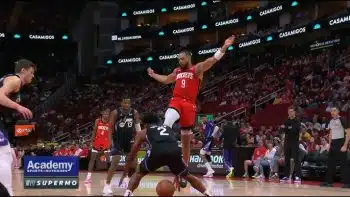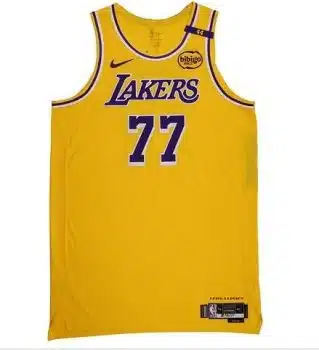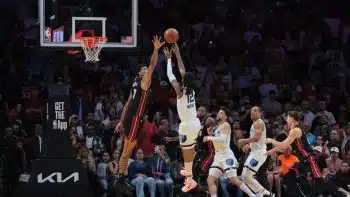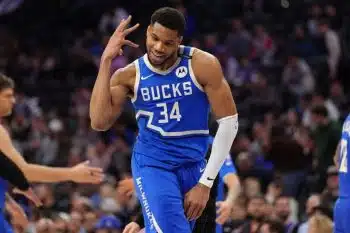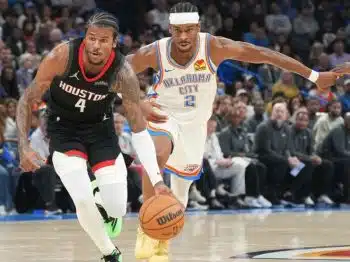NBA
The Next Frontier in Basketball: Results-Based Mindfulness

Science is now showing that the brain has the ability to affect physiology and improve motor skill sets without lifting a finger.
For example, through visualizing desired outcomes, a person can rewire new neuro-networks (or pathways) in the brain, requisite for acquiring optimal motor function skills. This is based upon contemporary brain-based research.
The implications of these developments on the player development and performance space could be massive. Before we dive further into how, let’s first cover some foundational brain mechanics.
The Brain’s Neuro-Networks
According to some of the latest Epigenetic and neuroscience work by Dr. Joe Dispenza, the brain is comprised of a multitude of neuro-networks.
Neuro-networks are informational highways that transfer both information and commands. These networks are wired and rewired based upon our most consistent habits and behaviors.
According to Dispenza, people can upshift physiology by applying mind-based methods that rewire the brain’s neuro-networks.
Employing consistent visualization helps to fire and/or rewire these neuro-networks to more efficiently execute the specific task at hand. Additionally, employing leading-edge High-Performance methods takes this one step further by supercharging the process.
Current Approaches
The current player development landscape generally leaves out likely the most important element of unlocking human potential and high-performance, the impact that systematically firing and rewiring neuro-networks in the brain has on performance.
This approach is much like honing habit in a very specific, weeding out unproductive routines while installing productive programs, which has the effect of boosting physiology and mental performance.
Probably, the most leading edge and powerful way to do this is through the implementation of Brain-Based – Player Development methods. These methods can be applied to help players focus better.
Empirical Evidence
High-Performance tools addressing mental hurdles have been shown to quickly and effectively eliminate leftover elements from past injuries, but that is not all.
Take, for example, a study published in the Journal of Neurophysiology in 1992, where three test groups were used. Group No. 1 employed five, one-hour physical workout sessions per week for four weeks to improve arm strength. The second group just mentally rehearsed the same arm exercise that Group 1 did, without physically lifting a finger. Control groups did not exercise their arm or mind.
As you would expect, at the end of four weeks, Group 1 exhibited a 30% increase in muscle strength. But get this, the group that purely mentally rehearsed the exercise without any physical training, displayed a 22% increase in muscle strength!
Fascinating stuff, right? Another study, performed by Harvard researchers, took a group and divided it in half. One group practiced a five-finger piano exercise, two hours a day for five days. The other group’s members mentally rehearsed the exercise as if they were sitting at the piano without physically moving their fingers in any way.
Brain scans of both groups after the exercise revealed that they created a significant amount of neural activity. The group’s brain scan that only visualized the outcome was very similar to the group that had physically rehearsed.
There is big-time relevance here in regards to helping players improve.
Science continues to show that there is a tangible progression that takes place by Rep’ing the mind in a certain way.
Optimizing Load Management
Efficient workflows are valued over old paradigm, sheer workload routines like never before. This is part of the reason why Load Management has become a priority. Career longevity and injury prevention have moved to the center.
Brain Psychology Player Development, which allows players the chance to improve on-court performance and physiology without increasing repetition of physical wear and tear, is an extremely valuable organizational asset.
Methods that optimize mental focus, emotional dissonance, and statistical performance, without increasing the physical load on the body, are at a premium. For these reasons, combined with the scientific efficacy mentioned above, there could be a perfect storm brewing for massive market disruption.
The work-harder-for-longer model of player development is not resonating with the players as it once did. Combine this with leading-edge techniques now coming on-line, and standard practices of improving performance could change quickly. Players such as Aaron Gordon, LeBron James, Kevin Love and Rondae Hollis-Jefferson are infusing their routines with mind-based methods.
Considering that very few teams currently employ these methods in a systematic or customized fashion, there exists a HUGE opportunity for those forward-thinking organizations.
In Closing
For players and teams looking to gain a distinct edge in the development space, the most efficient way to do this is through employing processes that fire and rewire neuro-networks.
Mind-based methods have been shown time and time again to facilitate this.
Based on growing empirical evidence, results and social proof, the next frontier in basketball could be mindfulness methods mentioned herein.
